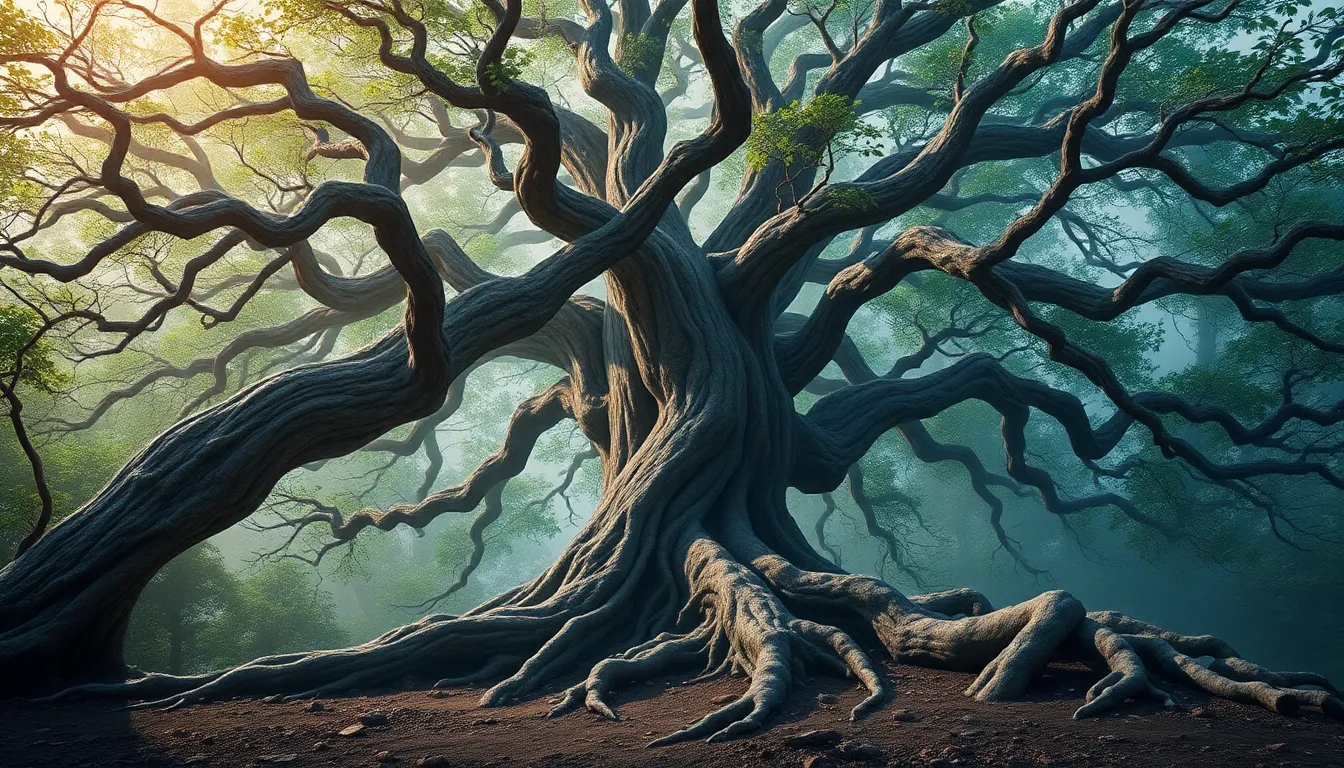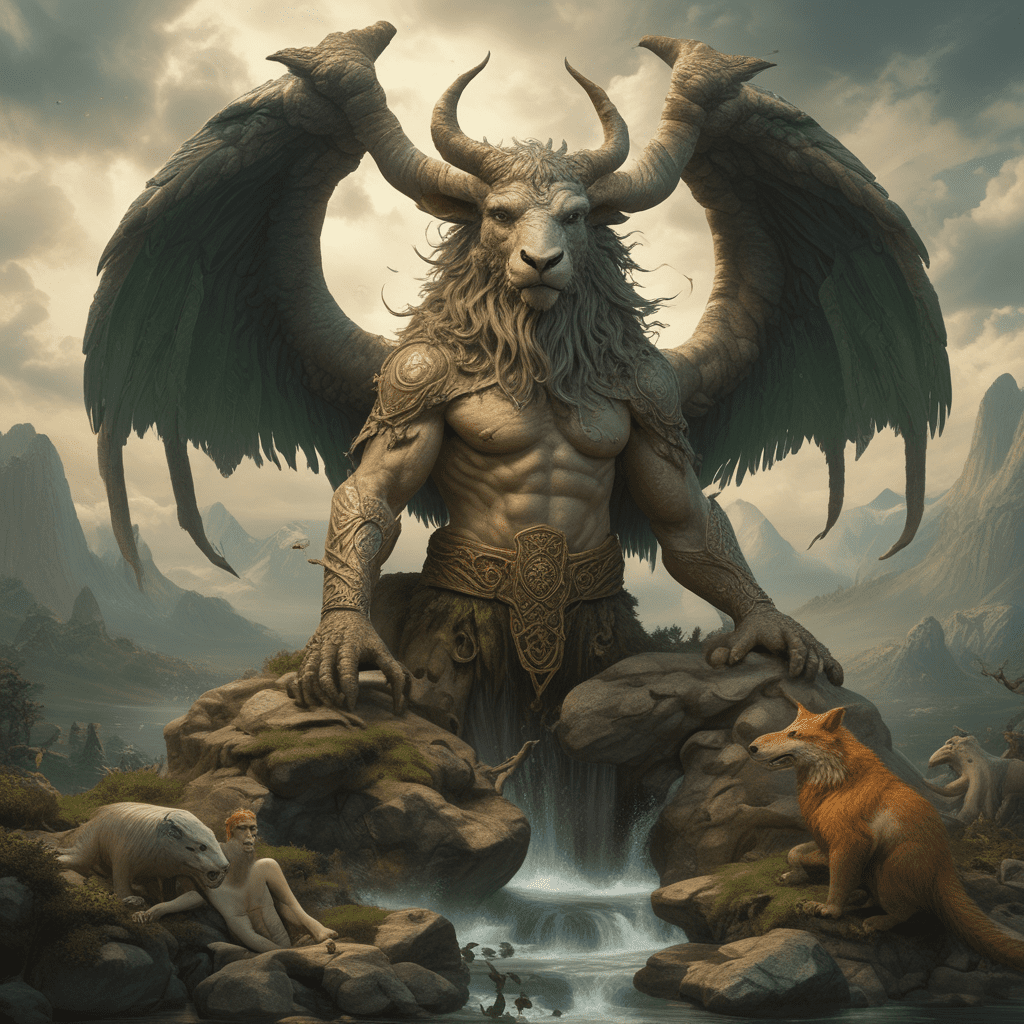The Sacred Roots: Ancient Trees in Mythology
I. Introduction
Ancient trees, often defined as those that have lived for several centuries or even millennia, hold a unique place in human culture and consciousness. Their grandeur and resilience make them symbols of endurance and continuity, serving as living witnesses to the passage of time. The significance of these trees extends beyond their physical presence; they are deeply rooted in mythology, where they often embody profound spiritual meanings.
Mythology, the collection of traditional stories that cultures tell to explain natural phenomena and human experiences, has a rich connection to nature. Trees frequently appear in these narratives, representing a variety of themes such as life, death, and rebirth. This article explores the sacred status of ancient trees across various mythologies, revealing their importance in spiritual practices, folklore, and cultural beliefs.
II. The Symbolism of Trees in Mythology
Trees have long been revered as powerful symbols in mythology, embodying the complexities of existence.
- Life, Death, and Rebirth: Trees experience cycles of growth, decay, and renewal, mirroring human experiences of life and death.
- Connection to Seasons: The changing appearances of trees with the seasons reflect the rhythms of nature and the cycles of life.
- Knowledge and Wisdom: Many cultures view trees as sources of wisdom, with their rings representing the passage of time and experiences.
III. The World Tree: A Universal Archetype
The concept of the World Tree, a cosmic tree that connects different realms, is a common archetype across various cultures. This tree symbolizes the interconnectedness of all existence.
- Yggdrasil in Norse Mythology: Yggdrasil is an immense ash tree that connects the nine worlds, serving as a meeting point for gods, humans, and other beings.
- Tree of Life: Found in several traditions, the Tree of Life represents the interdependence of all life forms and the cycle of creation and destruction.
The World Tree acts as a bridge between the heavens, earth, and the underworld, illustrating the interconnectedness of all realms of existence.
IV. Sacred Trees in Indigenous Cultures
In many indigenous cultures, trees hold sacred significance and play an essential role in spiritual practices.
- Baobab in African Cultures: Known as the “Tree of Life,” the Baobab is revered for its ability to store water and provide sustenance in harsh climates.
- Cedar in Native American Traditions: Cedar is considered a sacred tree, used in rituals for purification, protection, and healing.
Rituals and ceremonies centered around sacred trees often involve offerings, prayers, and gatherings, showcasing the deep respect indigenous peoples hold for these natural beings.
V. Ancient Trees in Greek and Roman Mythology
The ancient Greeks and Romans also revered specific trees, attributing them to their gods and associating them with significant cultural values.
- Oak Tree: The Oak tree was sacred to Zeus (Jupiter), symbolizing strength and endurance, and was often used in oracles.
- Laurel Tree: Associated with Apollo, the laurel tree symbolizes victory and achievement, famously used to crown victors in the ancient games.
- Olive Tree: A symbol of peace and prosperity, the olive tree is linked to Athena, representing wisdom and tranquility.
VI. The Connection Between Trees and Deities
Trees are often seen as embodiments of gods and goddesses in various mythologies.
- Tree Spirits and Dryads: In Greek mythology, dryads are tree nymphs who protect their respective trees, emphasizing the spiritual connection between nature and divinity.
- Folklore on Sacred Groves: Many cultures have folklore surrounding sacred groves, believed to be places where the divine meets the earthly, deserving of protection and reverence.
VII. The Role of Ancient Trees in Folktales and Legends
Folktales often feature trees as central elements, conveying moral lessons and cultural values.
- The Giving Tree: This story illustrates themes of selflessness and sacrifice, showcasing the deep emotional connections humans have with trees.
- Jack and the Beanstalk: A tale that emphasizes courage and adventure, the beanstalk serves as a bridge to new realms and possibilities.
These narratives evolve over time, reflecting changing cultural values and the enduring significance of trees in human storytelling.
VIII. Modern Interpretations and Cultural Legacy
Ancient trees continue to influence contemporary spirituality and environmentalism.
- Resurgence of Traditional Ecological Knowledge: Many communities are rediscovering the wisdom of indigenous practices related to trees and their conservation.
- Preservation Efforts: Organizations and individuals are working to protect ancient trees, recognizing their ecological importance and cultural heritage.
The legacy of ancient trees remains a vital part of our understanding of nature and our place within it.
IX. The Scientific Perspective: Biology Meets Mythology
From a scientific viewpoint, ancient trees play an essential role in our ecosystems. They provide habitats, purify air, and contribute to the carbon cycle. The biological aspects of trees often align with their mythological significance, as their longevity and resilience mirror human aspirations for endurance and wisdom.
Ultimately, the sacred roots of ancient trees intertwine with the tapestry of mythology, reminding us of the profound connections between nature, culture, and spirituality. As we continue to explore and honor these magnificent beings, we recognize their vital role in both our past and future.




